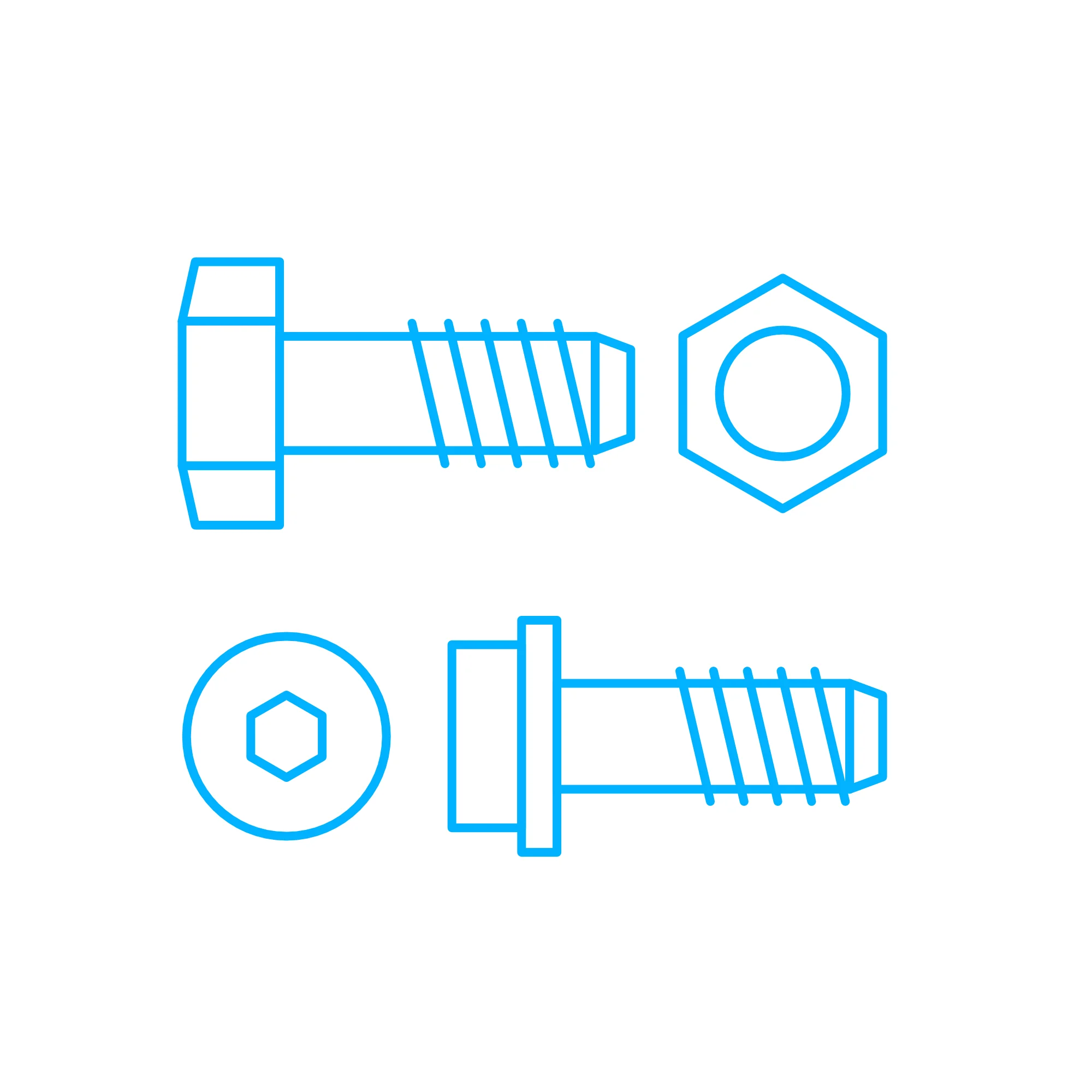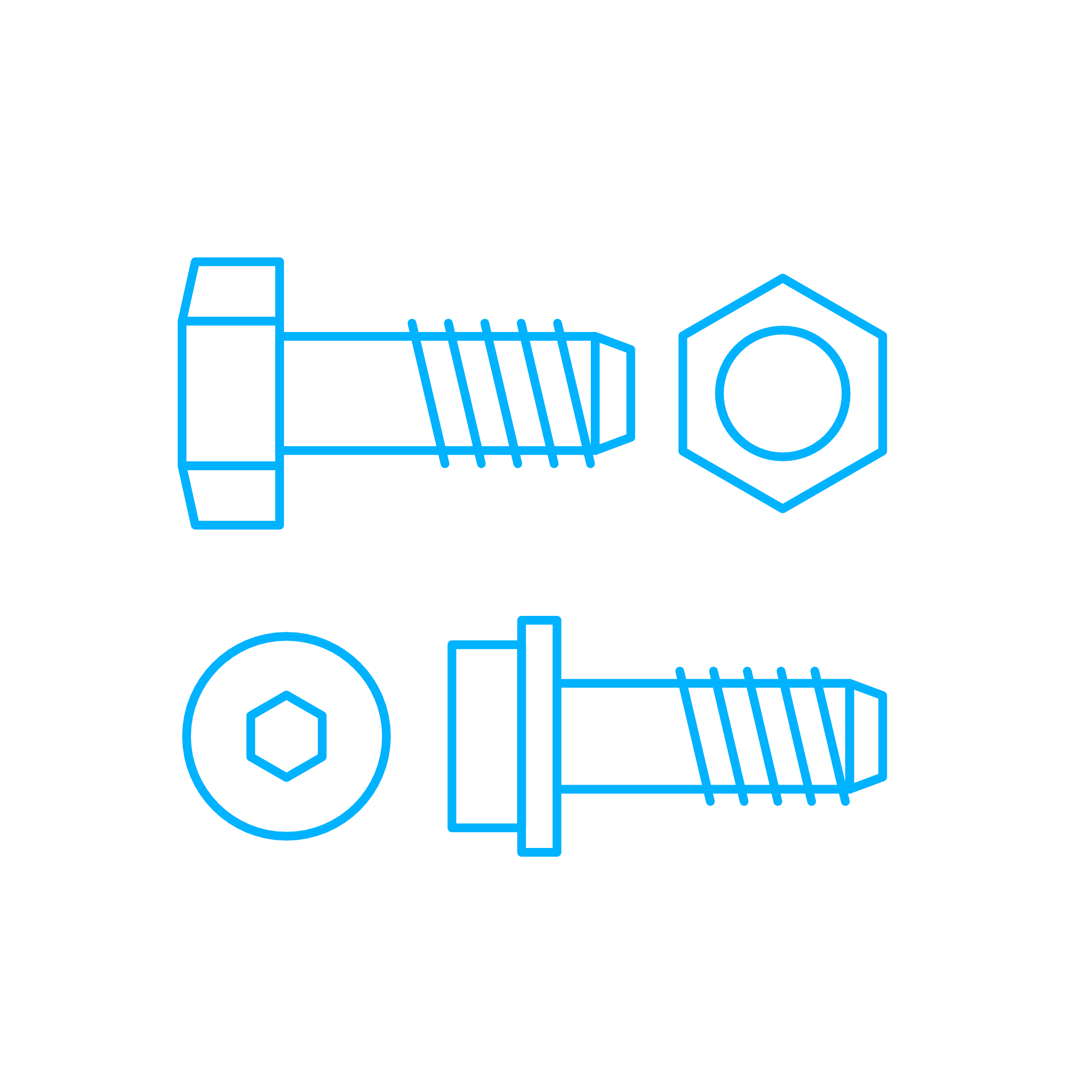FILLISTER SCREW Screws for demanding diesel and marine engine applications
Screws are precision fasteners that create secure joints throughout engines. From cylinder head covers and timing housings to turbocharger brackets and fuel system components, the right screw maintains clamping force under vibration, heat, and pressure. In powertrain environments—especially in large diesel and marine engine installations—screws determine how well interfaces seal, align, and resist movement over thousands of operating hours. Within this category, the FILLISTER SCREW is widely used where a tall head and robust drive engagement are required for reliable service access and high clamping loads.
Engine builders specify screws by material, property class, thread form, head type, coating, and lubrication to achieve predictable preload and long service life. For purchasers and technical decision-makers, understanding how screws function and which designs fit each joint is essential to protecting performance, uptime, and budget.
Technical function of screws in engines — FILLISTER SCREW use in diesel engine and marine engine assemblies
At their core, screws convert tightening torque into axial preload. This clamping force compresses gaskets, locks interfaces, resists shear, and prevents micro-movement between components. In a diesel engine or marine engine, correct preload is critical because thermal cycles, pressure pulsations, and high-frequency vibration continuously attempt to loosen joints. A FILLISTER SCREW, recognized by its tall, cylindrical head with a slightly domed top and deep drive, offers strong tool engagement and a generous bearing surface, enabling consistent torque transfer and repeatable maintenance in confined engine spaces.
Key engineering factors include:
Torque–tension relationship: The coefficient of friction at threads and under-head surfaces governs how torque translates into clamp load. Specified coatings (zinc flake, phosphate, MoS2) and lubricants stabilize this relationship, enabling technicians to hit target preload without yielding the fastener.
Thread engagement: Typical design rules aim for engagement lengths around 1.0–1.5× diameter in steel housings and up to 2× diameter in softer materials to prevent thread stripping. Correct pitch and tolerance class ensure smooth assembly and durable seating.
Head geometry and access: The FILLISTER SCREW head height supports deep drive engagement, reducing cam-out during service. Its compact diameter helps in tight recesses around pumps, gear cases, or instrument brackets.
Locking strategies: Depending on the joint’s criticality, engines employ prevailing torque features, thread-locking compounds, spring or serrated washers, safety wire, or lock plates to maintain preload across duty cycles.
- · High tensile strength options (e.g., 8.8, 10.9, 12.9) for robust preload.
- · Corrosion-resistant materials and coatings for marine atmospheres.
- · Precise thread tolerances for reliable torque–tension behavior.
- · FILLISTER SCREW head geometry for secure tool engagement.
- · Heat-treated alloys for temperature stability near exhausts and turbos.
- · Engineered under-head bearing surfaces to protect gaskets and flanges.
- · Compatibility with safety wiring and lock plates on critical joints.
- · Traceable batches for consistent quality in OEM parts programs.
When specified and installed correctly, screws—especially purpose-chosen variants such as the FILLISTER SCREW OEM parts—support efficient assembly, stable sealing, and sustained performance across overhaul intervals.
Why screws are critical to engine reliability and service life
Screws are small components with system-level impact. Insufficient preload or degraded fasteners can trigger a chain of failures: gasket blow-by, fluid leaks, misalignment, fretting corrosion, and ultimately component fracture. On diesel and gas engines, even a minor loss of clamping force at a pump bracket can propagate vibration to adjacent components, accelerating fatigue. In marine engine environments, salt-laden air intensifies corrosion; unprotected screws can seize (galling), complicating maintenance and risking thread damage in expensive housings.
Common issues when screws are worn or improperly specified include:
• Loss of preload due to relaxation, thread wear, or thermal cycling. • Crack initiation at stress risers from over-tightening. • Seized fasteners from inadequate coatings or unsuitable materials. • Distorted flanges and uneven sealing from poor head bearing surfaces. • Premature component replacement caused by damaged threads or joint movement.
Proactive selection of the correct screw type and faithful replacement with parts that match material, geometry, and coating specifications preserves alignment, maintains seals, and extends service intervals.
Advantages of OEM spare parts suitable for Screws — performance, reliability, and budget
OEM spare parts suitable for Screws replicate the exact fastener blueprint defined by engine designers. That fidelity matters: torque–tension curves, head geometry, and coatings are calibrated to the joint’s stiffness and load spectrum. Using precisely matched FILLISTER SCREW OEM parts safeguards performance and supports predictable maintenance plans.
What decision-makers gain from OEM spare parts suitable for Screws
• Consistent clamp load: Controlled materials, heat treatment, and surface finish produce repeatable tightening results and help avoid yield or thread damage.
• Longer service life: Correct fatigue strength and corrosion protection withstand thermal and vibratory stresses in diesel and marine engine duty.
• Lower total cost: Stable joints reduce rework, leakage repairs, and collateral damage, helping protect budgets over full operating cycles.
• Safety and compliance: Proper thread classes, head dimensions, and coating systems maintain the engineered joint, supporting class and audit requirements.
• Traceability: Batch identification and inspection records streamline quality control and simplify fleet documentation.
MOPA — your partner for OEM spare parts Screws and FILLISTER SCREW solutions
MOPA supplies OEM spare parts suitable for Screws across leading diesel and gas engine platforms, including specialized FILLISTER SCREW configurations for marine engine and power generation applications. Procurement teams value our speed in sourcing, rigorous quality checks, and secure global logistics.
We provide responsive quotations, short lead times on common dimensions and materials, and coordinated shipments with full documentation. Our team verifies specifications against engine maker drawings, ensuring the correct property class, head style, thread tolerance, and coating for each joint. From single urgent items to consolidated fleet packages, MOPA delivers the combination of speed, quality, and security that technical decision-makers expect in the OEM parts trade.
Conclusion — FILLISTER SCREW Screws that keep engines tight and efficient
Screws are fundamental to engine integrity, and the FILLISTER SCREW is a proven choice where strong drive engagement and reliable clamping are essential. Selecting OEM spare parts suitable for Screws preserves preload, protects components, and supports reliable operation across diesel and marine engine fleets.
With MOPA as your partner for OEM parts, you combine technical accuracy with fast, secure supply to keep engines sealed, aligned, and running at peak efficiency.


